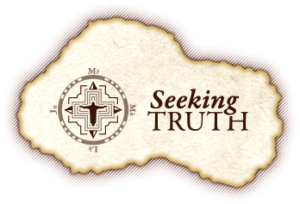Podcast: Play in new window | Download (Duration: 30:39 — 42.1MB) | Embed
Subscribe: Apple Podcasts | Spotify | Amazon Music | Android | Pandora | iHeartRadio | JioSaavn | Podchaser | Gaana | Podcast Index | Email | TuneIn | Deezer | Anghami | RSS | More
Episode 13 – John 6: I Am the Bread of Life pt 1

As we begin our lecture on John 6, Sharon reminds us that Jesus came for all: the common Jew, the Jewish aristocracy, the Samaritans, the Edomites and ultimately for the entire world. We also recall from the end of John 5 that Moses wrote of Jesus (DEUT 18:15) who is the THEE prophet raised from his own people. Moving on to the feeding of the 5000, Sharon teaches about the typology of Jesus, the new Moses. The signs of Moses and the signs of Jesus are strikingly similar: Moses turns the water of the Nile into blood and Jesus turns the water at Cana into wine and through the Eucharist, wine into blood; Moses receives the Law at Mt. Sinai and Jesus fulfills the Law; Israel receives manna, the bread from heaven and Jesus IS the Eucharistic bread from heaven; Moses battles Pharaoh, whose hardened heart embodies Satan and Jesus battles Judas, whose heart is entered by Satan. Sharon then goes on to teach us about the harrowing of Hades, outlining the scriptural basis for this belief that we profess each time we recite the Apostles Creed. Moving then into the heart of John 6, Sharon shows us the Old Testament prefigurement of the Eucharist, beginning with the animal sacrifices prescribed throughout the Torah. We learn that animal blood was necessary for the atonement of sin, but consuming the animal blood was expressly forbidden (LEV 17:10) which helps us understand the scandal of Jesus’ word: “unless you eat the flesh of the Son of Man and drink his blood, you have no life in you (JN 6:53).” Even though the Israelites ate manna in the desert, they still died. Jesus, the new Moses, is the heavenly bread that gives us eternal life. Sharon transitions to a wonderful teaching about the Jewish feast days, showing us how Jesus fulfills the feast days that are law as described in Torah. Beginning with Passover, we see how the blood of the Lamb that protected the Israelites from the angel of death prefigures the blood of the Lamb of God who saves us from death. The feast of Unleavened Bread that follows is likewise fulfilled in Jesus, the sin-free bread that is broken, yet whole; the Eucharistic sacrifice that brings us into union with God. Next, the Feast of First Fruits is realized in the risen Jesus, the first fruits of all that have died (1 COR 15:20). The lecture concludes as it began, looking once again at the feeding of the 5000, showing us the symbolic importance of the barley loaves and the counting of the Omer, which connects the Passover with the Jewish Pentecost and then by extension, connecting the crucifixion of Christ with the descent of the Holy Spirit at the first Christian Pentecost.
Sharon Doran serves as the teaching director of “Seeking Truth.” An experienced Bible Study teacher, Sharon has a passion for scripture that will motivate and challenge you to immerse yourself in God’s Word and apply His message to your everyday life.
For more in this series visit the Seeking Truth with Sharon Doran Discerning Hearts page
 “Seeking Truth” is an in-depth Catholic Bible Study, commissioned by the Archdiocese of Omaha in response to John Paul II’s call to the New Evangelization as well as Pope Benedict XVI’s exhortation for all Catholics to study scripture. To learn more go to www.seekingtruth.net
“Seeking Truth” is an in-depth Catholic Bible Study, commissioned by the Archdiocese of Omaha in response to John Paul II’s call to the New Evangelization as well as Pope Benedict XVI’s exhortation for all Catholics to study scripture. To learn more go to www.seekingtruth.net

